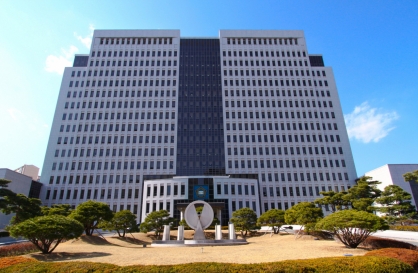Heat-related illnesses can lead to brain, organ damage
By Lee JaeeunPublished : July 31, 2023 - 15:44

With the number of people suffering from heatstroke growing in South Korea, medical experts and health authorities warned of the consequences of the condition on Monday, saying that it could damage the brain and multiple organs if left untreated.
Heat-related illnesses refer to several acute illnesses caused by the body's exposure to an excessively hot environment. They are caused by the body's inability to cool itself down. They can lead to a number of symptoms, including headaches, high fever, confusion, delirium, unconsciousness and seizures.
The most serious heat-related illness is heatstroke.
The normal temperature of the human body is approximately 36.5 to 37 degrees Celsius, but in cases of heatstroke, the body temperature can rise to 40 C or higher within 10 to 15 minutes. The thermoregulatory center plays a role in maintaining the body core temperature, but when the body continues to be exposed to high temperatures, the thermoregulatory center becomes damaged. Then the body temperature may rise sharply.
Heat in the body above 40 C can cause central nervous system disorders and other permanent disabilities.
Heatstroke patients can die if left unattended. If not treated immediately, the fatality rate reaches 100 percent. Even if treated, the fatality rate is about 80 percent if the body temperature reaches 43 C and about 40 percent if it is lower than 43 C.
On its own, high heat is life-threatening, but it is particularly dangerous to those with a history of cardio-cerebrovascular diseases such as hypertension, diabetes, stroke, chest pain or arteriosclerosis, according to the Korea Disease Control and Prevention Agency.
The number of those with heat-related illnesses has spiked in the past few days amid the heat wave that has hit the country since the monsoon season ended early last week.
According to the KDCA, 209 people have been diagnosed with heatstroke across the country for three days from Thursday to Saturday.
Specifically, 65 people were diagnosed with heatstroke nationwide Thursday, 71 on Friday, and 73 on Saturday.
A total of 10 people have been reported to have died from heat-related illnesses since May 20, when daily tallies have begun to be recorded this year, including six from heat-related illnesses on Saturday. Most were elderly individuals who lost consciousness while working on farms under extreme heat.
The KDCA said Monday that the number of heatstroke patients will likely climb this week as the weather gets even hotter.
The KDCA recommended that the public take precautions against heatstroke and other heat-related illnesses such as heat exhaustion, by taking cool showers frequently, drinking cold water often, staying indoors if possible and wearing loose-fitting, light-colored clothing and wide-brimmed hats if they have to go outside.
The public and particularly elderly people were advised to avoid outdoor activities during the hottest part of the day, typically from 12 p.m. to 5 p.m.
The national weather agency, meanwhile said the hot weather is expected to last for at least 10 more days.
On Tuesday, the daily highs in most parts of the nation are expected to reach between 31 and 36 C, while the "feels-like" temperature is forecast to reach 35 C across almost the entire nation, the Korea Meteorological Administration said.
Both the daily highs and feels-like temperatures in most parts of the nation will remain around 35 C this whole week, according to the national weather agency.





![[K-pop’s dilemma] Can K-pop break free from ‘fandom’ model?](http://res.heraldm.com/phpwas/restmb_idxmake.php?idx=644&simg=/content/image/2024/05/09/20240509050541_0.jpg&u=20240509173751)




![[News Analysis] Yoon's first 2 years marked by intense confrontations, lack of leadership](http://res.heraldm.com/phpwas/restmb_idxmake.php?idx=644&simg=/content/image/2024/05/09/20240509050612_0.jpg&u=20240509233252)








![[Today’s K-pop] NCT’s Mark to drop 1st solo album in February 2025](http://res.heraldm.com/phpwas/restmb_idxmake.php?idx=642&simg=/content/image/2024/05/10/20240510050597_0.jpg&u=)